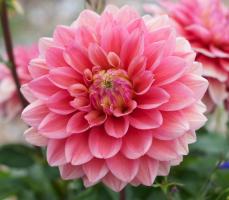Introduction
When planting plum trees, one of the most important considerations is how far apart to space them. There are many factors that can influence the distance between trees, including the type of plum tree, the soil quality, and the overall space available. In this article, we will discuss some general guidelines for spacing plum trees to ensure they grow healthy and produce a bountiful harvest.
Type of Plum Tree
The first consideration when planting plum trees is the type of tree being planted. Standard plum trees typically grow to be quite large and require more space between trees compared to dwarf varieties. Standard trees can grow up to 25 feet in height and span 20 feet in diameter while dwarf trees usually grow 8 to 10 feet tall and wide. Semi-dwarf varieties fall in between, with an eventual size of 12-15 feet tall and wide. When deciding how far apart to space plum trees, make sure to take these eventual sizes into account.
Soil Quality
The second consideration when planting plum trees is the quality of the soil. Soil that is nutrient-rich, loose, and well-draining is ideal for plum trees. This type of soil allows for proper root development, proper nutrient absorption, and adequate water supply. When planting in poor quality soil, spacing the plum trees further apart can help to prevent overcrowding and competition for nutrients and water. In a less optimal soil environment, it’s better to space trees further apart to ensure that they have access to all the nutrients they need to thrive.
Overall Space Available
The final consideration when planting plum trees is the overall space available. Make sure to measure the distance between other structures, like buildings, fences, and other trees. Trees should not be planted too close to any structures, as this can create problems as the tree grows. In general, standard plum trees should be spaced at least 15-20 feet apart, while semi-dwarf trees can be spaced closer together, around 10-12 feet apart. Dwarf trees should be spaced even closer together, around 6-8 feet apart. This will give each tree room to grow and spread out while still allowing enough space for gardeners to maneuver between the trees for maintenance and harvesting.
Conclusion
When planting plum trees, it’s critical to properly space trees to ensure their health and productivity. The general guideline for spacing plum trees is to take into account the type of tree, soil quality, and overall space available. Standard trees should be spaced 15-20 feet apart, semi-dwarf trees should be spaced 10-12 feet apart, and dwarf trees should be spaced 6-8 feet apart. By following these guidelines, you can rest assured that your plum trees will be healthy and productive for years to come.

 how many times do yo...
how many times do yo... how many planted tre...
how many planted tre... how many pine trees ...
how many pine trees ... how many pecan trees...
how many pecan trees... how many plants comp...
how many plants comp... how many plants can ...
how many plants can ... how many plants and ...
how many plants and ... how many pepper plan...
how many pepper plan...































